Tiles for the stove: types and their features
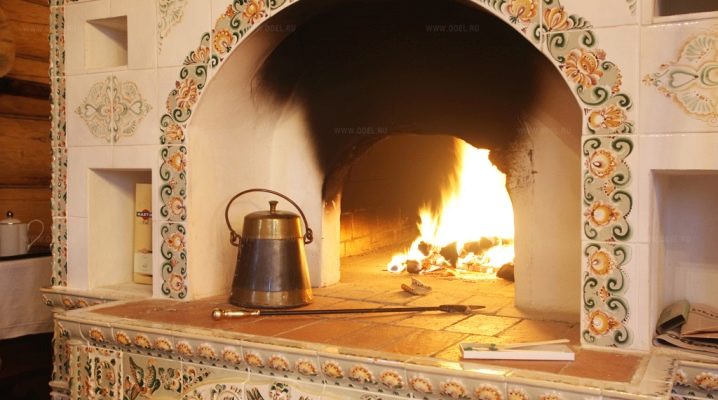
Decorating stoves and fireplaces with tiles is the most attractive type of surface decoration. The process of laying such tiles is a job that requires a high level of professionalism from a specialist. Tiled fireplaces and stoves will become a real work of art, which, in addition to aesthetic appeal, thanks to such finishes, increase the efficiency of heating the room.
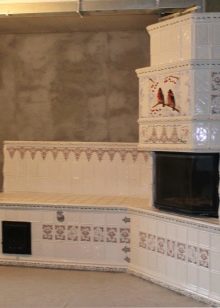
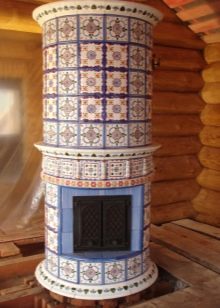
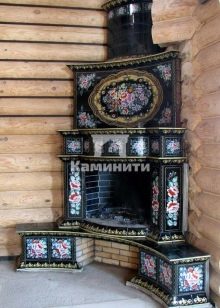
What it is?
Ceramic tiles decorated with multi-colored glaze were used in ancient Egypt to decorate walls and ceilings. Tiles appeared in Europe much later. They were used for lining stoves in the houses of the aristocracy. In Russia, such products were first used to decorate the facades and interior decoration of churches. Later, tiles began to be faced with heating devices in dwellings.
Real tile is the most expensive material, the manufacturing process of which is a rather complicated and painstaking manual work.
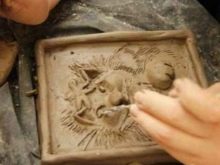


Today, the decoration of interior items and various surfaces with such products has again become a fashionable trend in the design of houses and apartments. The shape of the tile and the technology of its production have been improved over the centuries, thanks to which modern products amaze with their variety of patterns and textures. A wide assortment makes it possible to decorate stoves or fireplaces in the general style of the home, filling it with beauty and comfort.
Tiles are a product made of baked clay, which has some differences in its configuration.
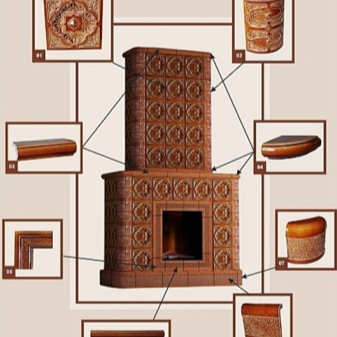
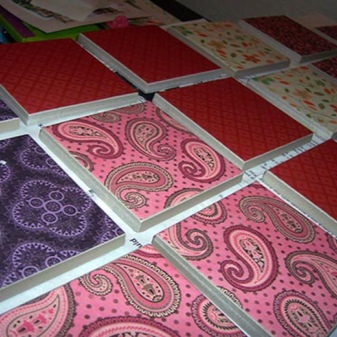
Peculiarities
A distinctive feature of such a tile is the presence of a rump - a protrusion that has a box-like shape on the back. Thanks to this feature of the products, their strength increases, as well as the total heat capacity of the heating device. The production of elements in the form of bulk products is a significant difference from ceramic tiles.
The unique structure of the tiles makes them the best material for cladding ovens. Clay serves as a raw material for the manufacture of tiles. As the temperature rises, its expansion rate is the same as the expansion rate of the brickwork, which gives the material excellent heat transfer properties.

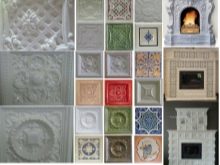
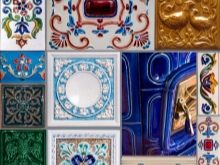
In the process of laying the elements behind the decorative cloth, a kind of "air cushion" is formed, which is filled with heated air, which makes it possible to evenly distribute heat over the entire surface of the stove.

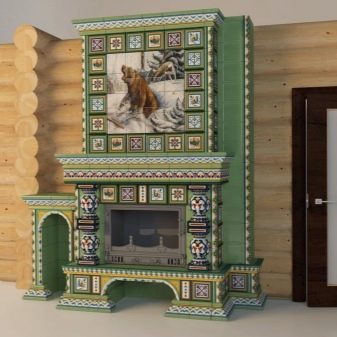
The main advantages of tiles include:
- resistance to temperature fluctuations;
- a good indicator of strength, which is achieved due to the thickness of the product;
- heat accumulation - a heated stove will give off heat to the room for about a day;
- a small indicator of moisture absorption;

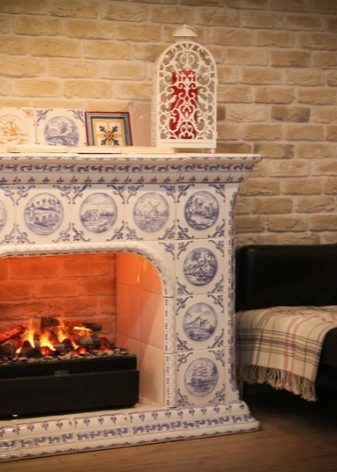
- ease of maintenance;
- fuel economy;
- low level of trauma of the material - contact with the surface does not cause burns;
- long service life;
- historical significance.
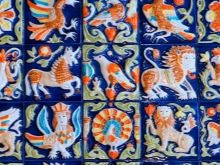

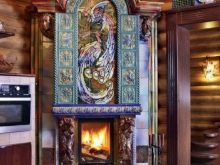
The attractiveness of tiled tiles is unrivaled. A stove decorated with such products will perfectly harmonize with the interior in a room in a modern high-tech style or in a rustic style of decoration, which was popular even under the tsar.
Modern models of stoves are designed in such a way as to use a minimum of fuel, which means saving money on heating the room.Modern versatile designs work perfectly on natural raw materials, as well as alternative fuel options.
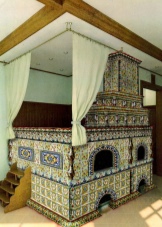

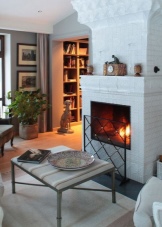
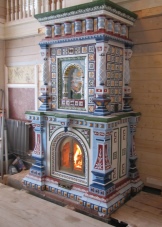
Views
The technology of laying tiles on the surface of the stove assumes the option of only one-piece laying, due to this, the unique properties of the material for preserving and retaining heat will actively work. Otherwise, they will not be able to fulfill their functions.

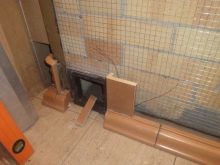

Based on the shape of the tiles, there are three main types of this material:
- Shaped products. Their main area of application is protruding areas on the stove, such as cornices. Such elements are rather decorative.
- Frontal products - they are used for laying on a flat surface.
- Corner tile, which is used to veneer the corners on the surface.
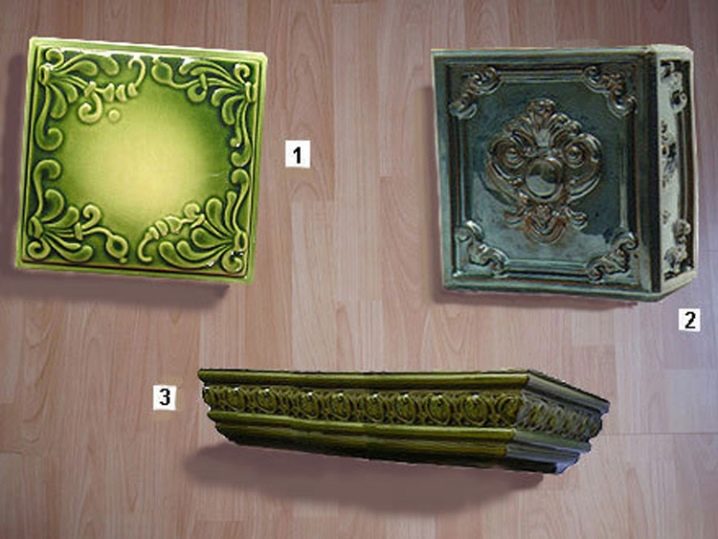
However, this standard classification is not limited to the main species. There are a lot of options and varieties of forms of such tiles, for example, there are basement elements, which are laid on the surface above the floor.
To finish the heating device, you will need at least two types of material. regardless of the stove project, since each individual sample is responsible for fixing to a specific part of the surface - corner elements are fixed to the stove edges, shaped products can be used for smooth linens, cornice samples are a decor for a fireplace portal, round parts are used for rounded parts of a room stove.
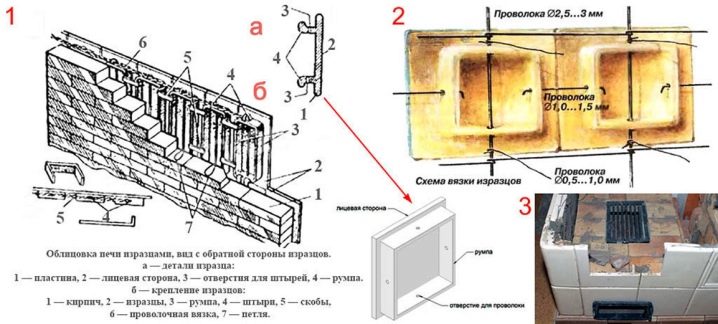
Complex designs of stoves require additional completing of elements for cladding - these can be shelves, edges, crowns, as well as views, which are used to regulate the cast-iron blower in the stove.


Design
To paint stove tiles, the following technologies are used:
- The work is carried out using ordinary oil paints and is called cold painting. Before this, the elements are treated with linseed oil, they are allowed to dry. This usually takes a day or two. Then they paint it, let it dry again and cover it with oil varnish. This method of decoration does not involve firing the tiles in a kiln.
- Engobes are painted using different types of clay.

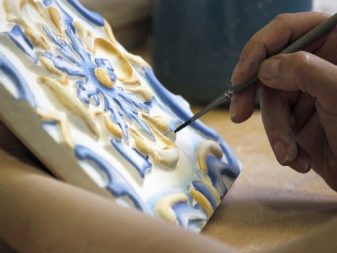
There are two options for such processing:
- The use of diluted clay, the density of which resembles food sour cream in consistency. Raw materials during work form various shades - from white to dark gray, red or brown color options can also be obtained. From heat treatment, the tone of the painting changes somewhat.
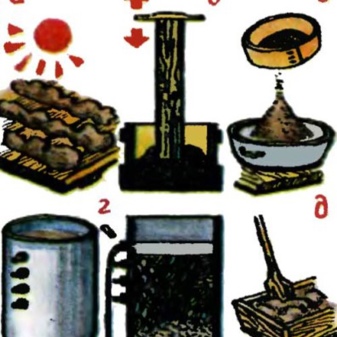
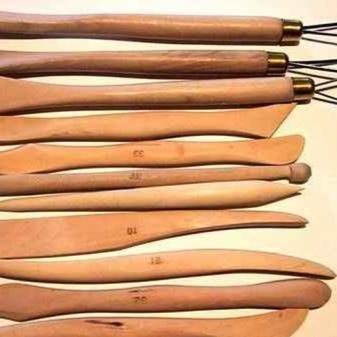
- The element is immersed in water, and then a thin layer of white engobe is applied to it. Then the tile is dried and painted with gouache, which has good resistance to high temperatures. For work, a brush, a rubber pear or a horn with a tube at the end is used. If there is no need to stain the products with glaze, then before processing, in order to give the product additional strength, they include from 10 to 30% crushed glass in the engoba. Grind it in special gloves and glasses to comply with safety requirements. This will require a metal container with strong and thick walls, as well as a metal pestle wrapped in polyethylene. The resulting composition is sieved through a nylon stocking or a fine sieve. Elements with existing painting are re-fired.

According to the type of front surface, the tiles are divided into smooth and embossed elements.
By the type of surface, glossy (glazed) tiles or matte and terracotta (not glazed) tiles are distinguished. The glaze retains its original appearance for decades and does not require specific maintenance. There are also faience types of tiles.
By the type of pattern, tiles can be with or without ornament.

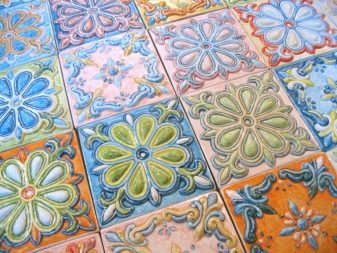
The style of painting tiled tiles is:
- Dutch - performed in a blue color palette on a snow-white background. Basically, these are marine themes, mills and landscapes.
- The Spanish direction is characterized by ethnic motives, which reflect the images of the East.
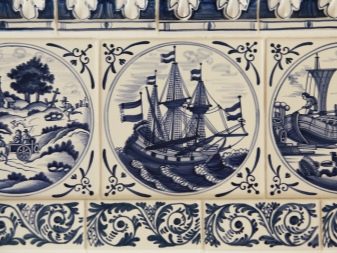
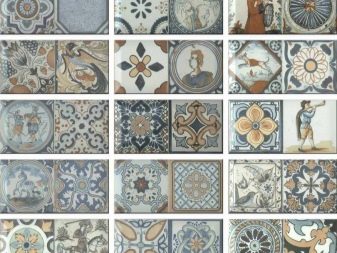
- The German direction, a distinctive feature of which is the correctness of the lines of the drawing, as well as simplicity and conciseness. These products are made in a standard size and do not require additional processing before surface finishing.
- The Russian style is distinguished by bright colors and a variety of patterns. Khokhloma painting can be cited as an example. This direction can be divided into types according to the principle of origin in a particular region, which is reflected in the shape of the relief, application options and types of the picture shown.
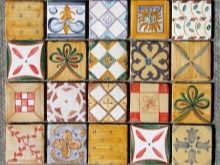

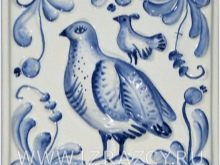
Khokhloma painting originated in the Nizhny Novgorod province, in the village of Khokhloma. The first porcelain factories appeared in the Gzhel volost, hence the name of the same name for blue patterns on a white background. Similar options for decorating tiles are widely used today.
Tiled elements from the city of Delphi are decorated with cobalt painting. The Flemish trend involves painting with blue and white flowers, as well as ornaments in chocolate shades.
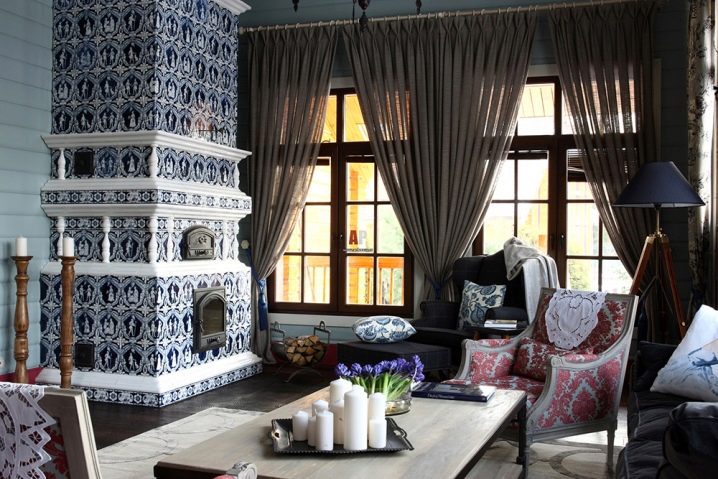
The Dutch school, combined with the original French trends, stands out for its sophistication and sophistication. In England, they preferred to apply state symbols to the tiles, which set a very characteristic aristocratic British style.
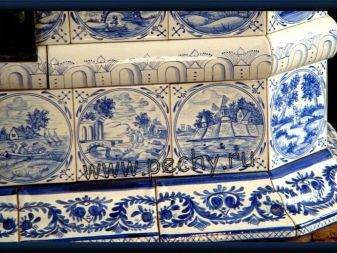
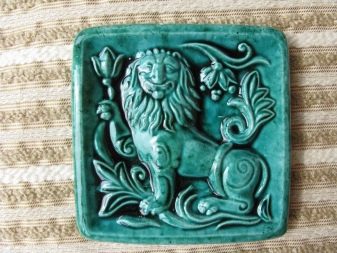
The tiled design has a lot of variations not only in style, but also in the presentation of decor:
- complex relief pictures;
- plot compositions highlighting certain historical moments, telling about epics or fairy tales of different peoples;
- patterns related to a specific area;
- vegetable compositions.
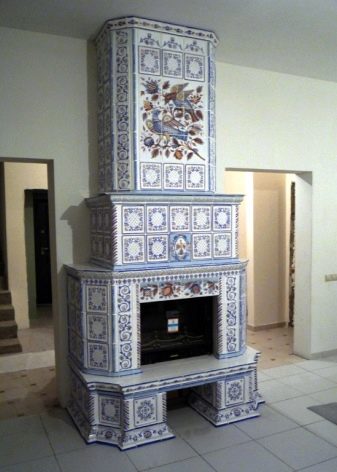
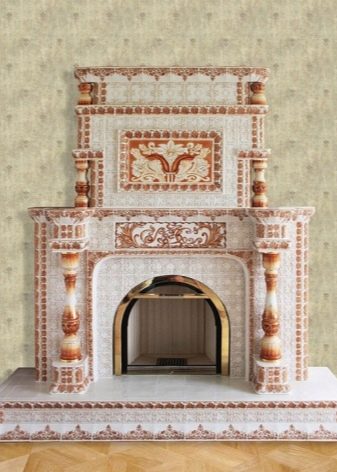
Based on the dimensional grid, you can also draw up a certain classification of tiles. However, in this case, it must be borne in mind that the dimensions of the elements may differ for each manufacturer. This feature is explained by the specifics of the manufacture of products.
Most of the samples are in the following sizes: element thickness - from 40 to 50 mm with a square tile size - 200x200, 220x220 (in the case of a square design) or 205x130 mm, when the product is made in the form of a rectangle. Such dimensions are regulated by the corresponding GOSTs.
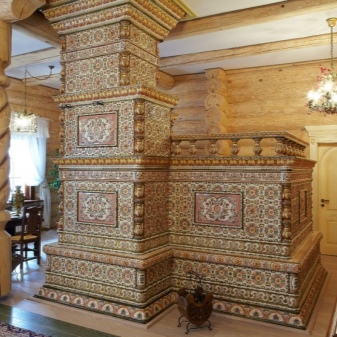
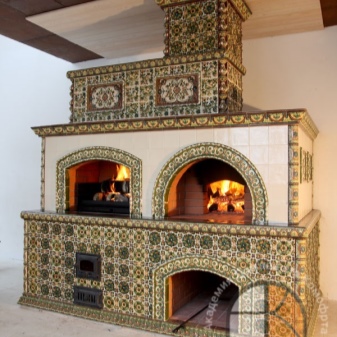
Based on the type of rump, the tiles can be divided into:
- common products where the head has an oblique cut;
- a tile with a rim, due to which it is much more convenient to fasten the element; this feature is ensured by the presence of mounting holes;
- there are heads with a complex board design and several cameras.
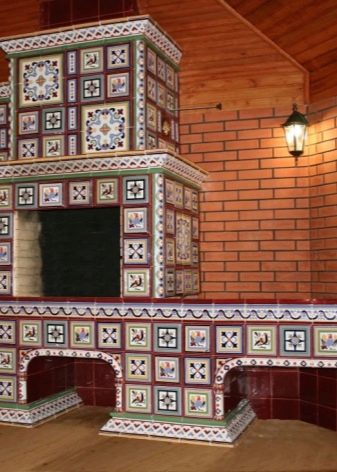
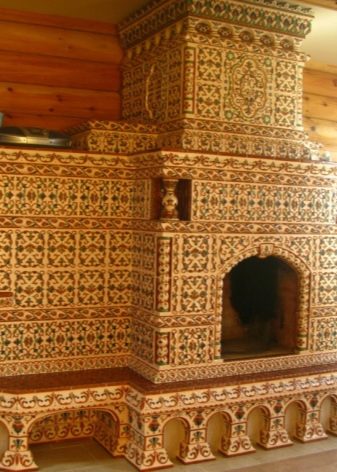
Domestic and foreign manufacturers of tiles for stoves offer customers to familiarize themselves with their product catalogs. They already contain complete compositions or sketches, from which you can add the desired picture. However, the customer has the opportunity to order a set of elements, including his own version of decorating the surface of the stove or fireplace.
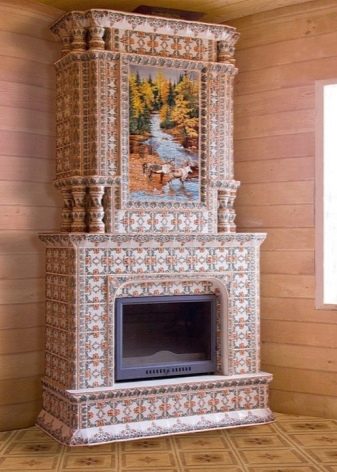
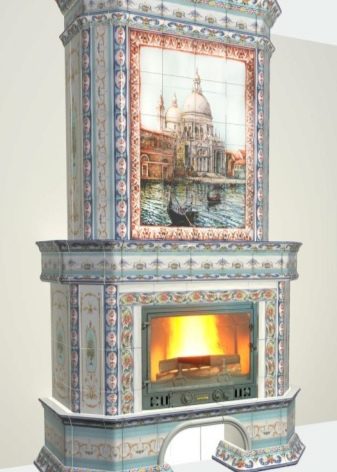
Beautiful examples in the interior
Tiled stoves for summer cottages or homesteads have always been an object that emphasizes the wealth of the owner.
The Russian stove, lined with painted tiles with a stove bench, will decorate the living room in a country house, help set a certain style to the interior, will serve as a convenient place for spending time in winter, warming with warmth and pleasing the eye with its beauty and originality.
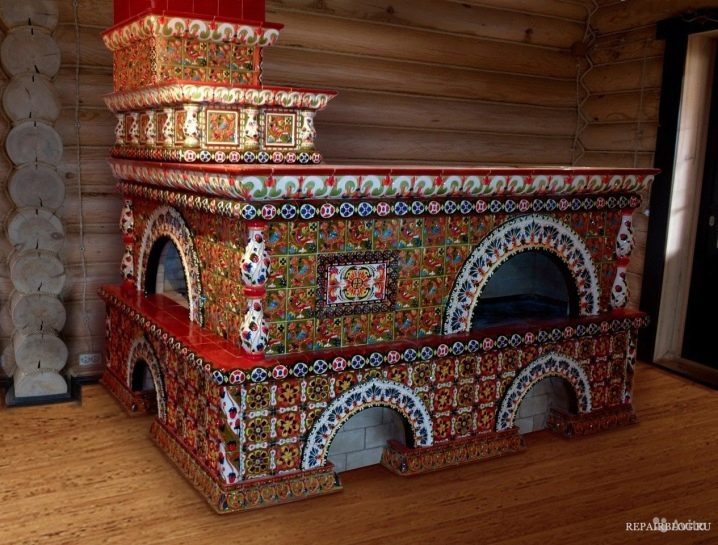
The place in the dwelling allocated for the heater, whether it be a stove or a fireplace, can be completely different, it all depends on the preferences of the owners. This also applies to the design of the device.
The stove in the dining room with painting in the Gzhel style will perfectly complement the interior of the room, furnished in a simple and light classical manner with a predominance of white.
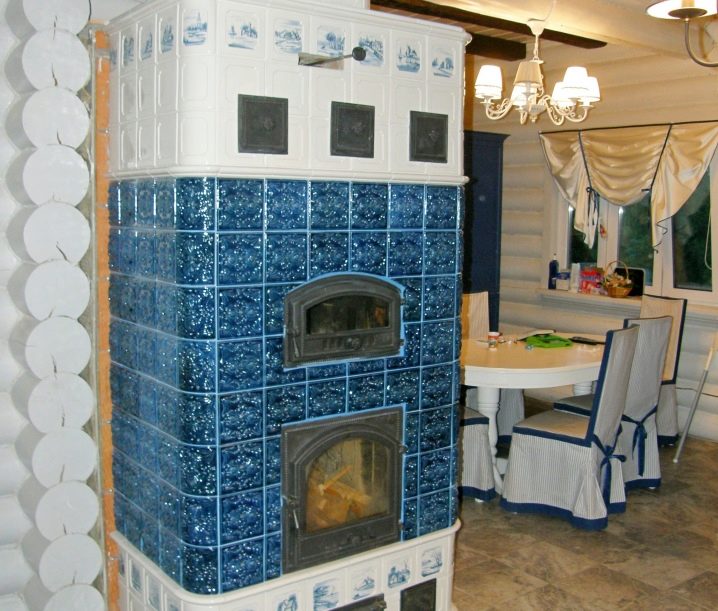
The kitchen is the place where the oven becomes a functional device, which gives not only warmth and comfort, warming the home, but also helps the hostess in cooking.Bright and multi-colored tiles will give a lot of positive emotions and decorate even the most ordinary and simply decorated room.
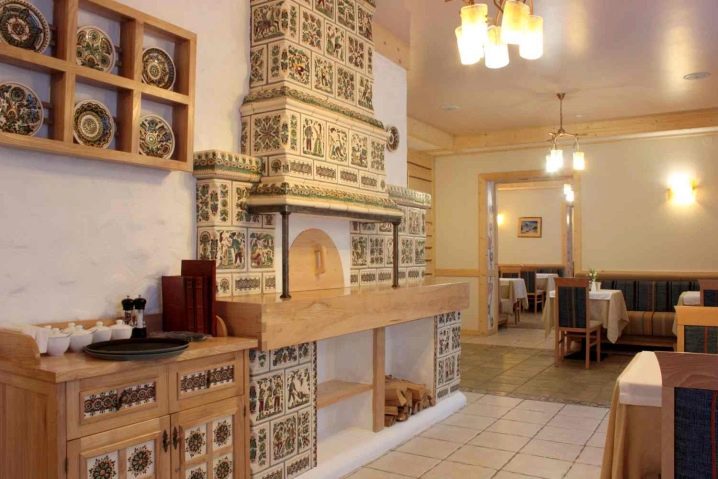
The bedroom, in which the stove will be located, decorated with monochromatic snow-white tiles and stucco moldings, will turn an ordinary rest room into royal luxurious chambers and will warm you with its warmth. Tiles in oriental style will decorate the bedroom and give the room the mystery of the East and the uniqueness of the interior.
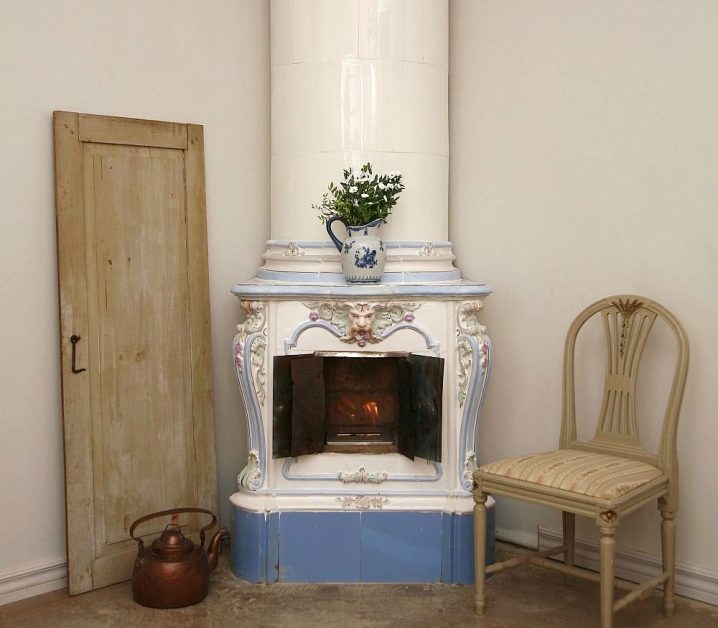
A tiled stove or fireplace in an apartment or a country cottage is an excellent option that combines the practical component of decorating surfaces with the aesthetic pleasure of contemplating decor made in the old fashion or in the style of the latest newfangled trends.
How to decorate the stove with tiles, see the next video.




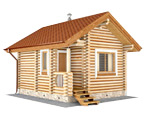
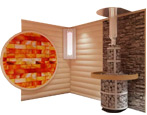
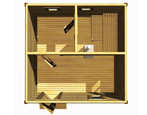
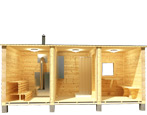
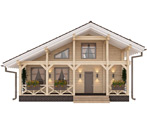
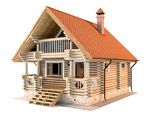


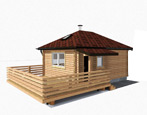
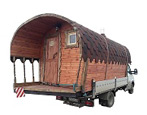


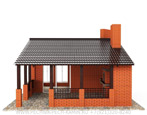

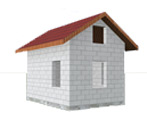

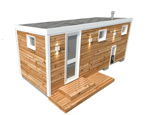
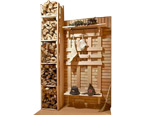
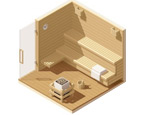
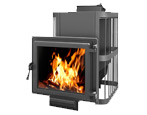
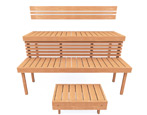
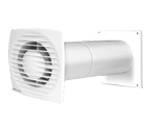

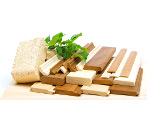


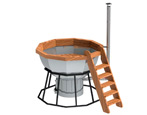
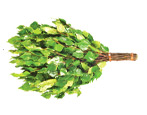
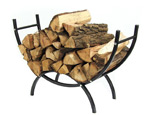
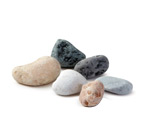
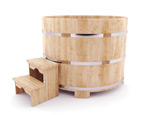
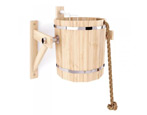
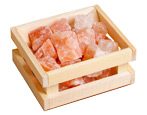

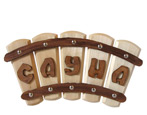
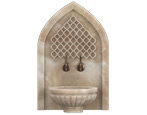

























































The comment was sent successfully.